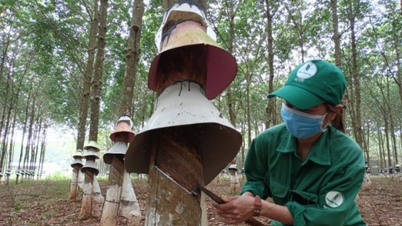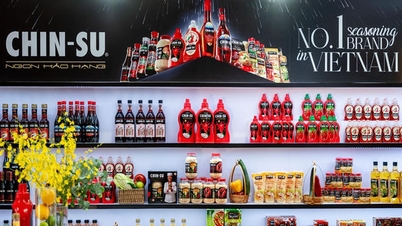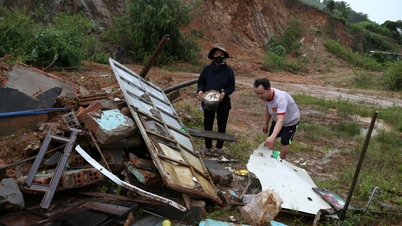Japanese rubber prices increased for 8 consecutive sessions
Rubber futures in Japan rose for an eighth straight session on November 18, boosted by concerns over supply disruptions from Thailand and a weakening yen. However, the market’s gains were capped by weak signs from China’s electric vehicle industry and a drop in global oil prices.
Rubber price developments on international exchanges
At the end of the trading session on November 18, rubber prices in major markets around the world recorded mixed developments:
- At the Osaka Exchange (OSE), Japan: Rubber contracts for delivery in April 2026 increased by 1.5 yen, equivalent to 0.46%, to 326.6 yen/kg (about 2.11 USD).
- At the Shanghai Futures Exchange (SHFE), China: Rubber futures for January 2026 delivery increased by 75 yuan, or 0.5%, to 15,320 yuan/ton.
- In Thailand: Rubber futures price for delivery in December 2025 increased by 0.49 baht, equivalent to 0.7%, reaching 67.12 baht/kg.
- At SICOM Exchange, Singapore: Rubber contract for December delivery decreased 0.6%, trading at 171.9 US cents/kg.

Key factors affecting the market
Concerns about supply disruptions in Thailand
The main factor supporting rubber prices is weather risks in Thailand, the world’s top rubber producer. The country’s meteorological agency has warned of heavy rains and flash floods from November 17 to 23. This has raised concerns about disruptions to rubber harvesting and transportation, which could push prices higher.
Pressure from electric vehicle industry and oil prices
On the other hand, the market’s upside momentum was limited by weak news from China’s electric vehicle (EV) sector. Electric vehicle maker XPeng forecast lower-than-expected growth in the fourth quarter due to a price war and intensifying competition. The slump in demand for cars could directly impact the output and prices of tires, a product that uses a lot of rubber, putting downward pressure on the price of this raw material.
In addition, the decline in oil prices during the session also negatively impacted the market. Natural rubber has to compete with synthetic rubber, a product made from crude oil, so fluctuations in oil prices often affect rubber prices.
Stable domestic rubber market
In contrast to fluctuations in the world market, domestic raw rubber purchasing prices on November 19 were recorded as stable at major companies.
| Unit | Product | Purchase price |
|---|---|---|
| Ba Ria Rubber Company | latex | 405 VND/degree TSC/kg |
| DRC latex (35 - 44%) | 13,500 VND/kg | |
| Raw latex | 18,000 VND/kg | |
| MangYang Company | Latex (type 1-2) | 394 – 399 VND/TSC |
| Mixed latex (type 1-2) | 359 – 409 VND/DRC | |
| Phu Rieng Company | Miscellaneous latex | 390 VND/DRC |
| latex | 420 VND/TSC | |
| Binh Long Company | Latex (at the factory) | 422 VND/degree TSC/kg |
| Mixed latex (DRC 60%) | 14,000 VND/kg |
Source: https://baolamdong.vn/gia-cao-su-hom-nay-1911-tang-8-phien-lien-tiep-tai-nhat-403717.html




![[Photo] The Standing Committee of the Organizing Subcommittee serving the 14th National Party Congress meets on information and propaganda work for the Congress.](https://vphoto.vietnam.vn/thumb/1200x675/vietnam/resource/IMAGE/2025/11/19/1763531906775_tieu-ban-phuc-vu-dh-19-11-9302-614-jpg.webp)





























![[Photo] Prime Minister Pham Minh Chinh and his wife meet the Vietnamese community in Algeria](https://vphoto.vietnam.vn/thumb/1200x675/vietnam/resource/IMAGE/2025/11/19/1763510299099_1763510015166-jpg.webp)
![[Photo] General Secretary To Lam receives Slovakian Deputy Prime Minister and Minister of Defense Robert Kalinak](https://vphoto.vietnam.vn/thumb/1200x675/vietnam/resource/IMAGE/2025/11/18/1763467091441_a1-bnd-8261-6981-jpg.webp)














































































Comment (0)